Claude Monet’s Water Lilies: Not Always so Beloved
- SUBSCRIBE
- ALREADY SUBSCRIBED?
BECOME A BONJOUR PARIS MEMBER
Gain full access to our collection of over 5,000 articles and bring the City of Light into your life. Just 60 USD per year.
Find out why you should become a member here.
Sign in
Fill in your credentials below.
Claude Monet’s monumental paintings of water lilies were fueled by grief, obsession, and the horrors of the Second World War.
The artist’s obsession with his garden at Giverny and in particular, his water garden, began in the late 1890s and continued almost unabated until his death in 1926 at the age of 86.
He had discovered the pretty village of Giverny in Normandy while on a train ride and had immediately determined to rent a house there where he moved with his family in 1883.
By then, Monet’s living arrangements were not just unusual, but highly unconventional. His eventual purchase of the house in Giverny had been partially financed from prior sales of some of his paintings to the art collector and critic Ernest Hoschedé.

Water lilies in Claude Monet’s garden in Giverny. (C) Pierre-Étienne Nataf, CC BY-SA 3.0
Ernest Hoschedé was an extremely wealthy department store magnate in Paris, who had collected an impressive collection of Impressionist art including works by Degas, Pissarro and Sisley, but Monet had remained his favorite artist, and the two families soon became close friends. Monet was married to an already ailing Camille and had two sons, Jean and Michel. Hoschedé had a very attractive wife, Alice, and six children. Belgian-born Alice Raingo was also from a wealthy family, and as well as the couple owning the Chateau de Rottembourg at Montgeron, southeast of Paris, they owned a fine house in Paris at 64, Rue de Lisbonne in the eighth arrondissement.
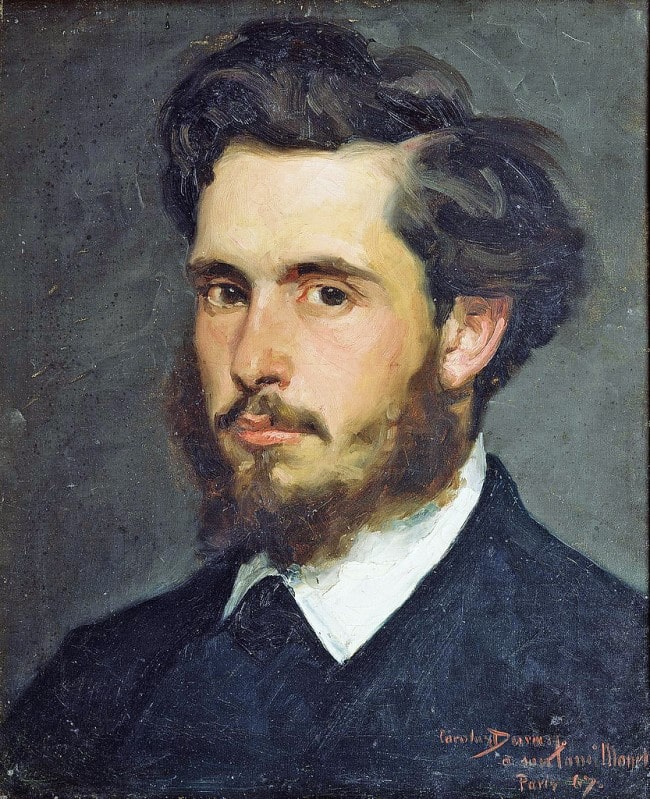
Portrait of Claude Monet by Carolus-Duran. (C) Public Domain
By 1877, Hoschedé’s wildly extravagant lifestyle had lead to his bankruptcy and he lost everything, including his entire art collection that was auctioned off in 1878 for a fraction of its value. Hoschedé had even attempted to run off to Belgium to escape his debtors.
Monet was swift to offer support, and invited the Hoschedé family to move in with him and Camille and his two sons in Vétheuil and later into a bigger house in La Roche-Guyon. In the meantime, Hoschedé had found work at the newspaper Le Voltaire and was often in Paris, away from Alice.
After Camille died in 1879, the families continued to live together at Poissy and then finally at Giverny. And here, of course, is where the story gets murky. Art historians question whether at the least one, if not two, of Alice’s children were in fact Monet’s. There seems little doubt that Monet’s affair with Alice had been ongoing long before Hoschedé’s death in 1891.
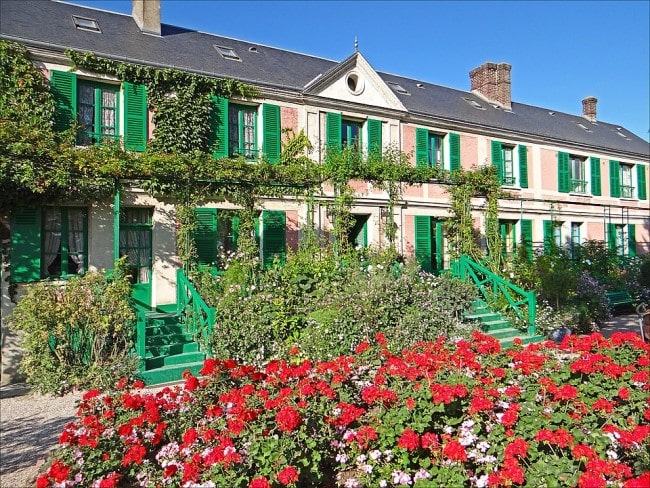
Monet’s house in Giverny. (C) Jean-Pierre Dalbéra , CC BY 2.0
Whatever the truth, Alice married Monet the following year in 1892 and both families remained conjoined in Giverny. (In another twist, Blanche Hoschedé Monet, Alice’s daughter, also an artist, was both the stepdaughter and daughter-in-law of Monet, having married Monet’s eldest son Jean.) It was both the death of Monet’s beloved Alice in 1911 and the death of Jean in 1914 that had spiraled Monet into the depths of despondency, despairing of the future, except for fueling a renewed desire to “undertake something on a grand scale.” Something to hold on to. Something to make life worth living.
The idea was not a new one; his obsession with water lilies paintings had began in 1897, and the completion of the water gardens and the Japanese bridge in 1899 began a passion that would endure for the next 30 years. Monet produced over 250 paintings of his water gardens and water lilies, but even earlier than 1914, the idea of monumental paintings was already germinating, when Monet had told Gustave Geffrey in 1908 that he wanted the theme of the water lilies, “carried along the walls.”

Claude Monet, Reflections of Clouds on the Water-Lily Pond. (C) Wikipedia Loves Art photo pool, CC BY 2.5
Controversy and protests had dogged Monet from the very beginning of his project to landscape his two-acre garden and build his water garden. Neighbors and the town council fought him every inch of the way, convinced that the exotic water lilies he had imported from Egypt and South America would poison the area’s water supply. (Monet had diverted the River Epte to create his water garden.) Monet had ignored all the protests, refusing to uproot his beloved water lilies, where they have remained for the last 130 years, the inspiration for some of the most famous paintings in the world today.
Monet painted all through the First World War; the gunfire only 50 miles away could be heard in Giverny, and the horrors and savagery of this most brutal of wars affected Monet deeply. His water landscapes became the entire focus of his life; he refused to slow down, despite the cataracts, diagnosed in 1912, weakening his eyesight.

The Water-Lily Pond by Claude Monet. (C) MFA Boston/ Public Domain
He was beset nevertheless by doubts and loneliness and grief. He was now an old man; he feared the relevance of his works, feared that he’d been forgotten, eclipsed by the likes of Picasso and the new avant-garde artists, and his self confidence had been destroyed by art critics to such an extent that he aimed for an impossible perfection in his work, leading him to destroy many of his paintings in despair. He missed his erstwhile contemporaries Cézanne and Renoir, now dead, but fortuitously he had rediscovered an old, unexpected ally, who had stepped into the breach with constant encouragement and support.
The politician Georges Clemenceau.
Monet had first met Clemenceau in 1860 but they had lost touch. Then in 1908, Clemenceau bought a house in the nearby village of Bernouville. They renewed their friendship; Clemenceau possessed a keen interest in the arts and both were staunch republicans. After Monet declared his intention of bequeathing two panels to the nation to commemorate the end of the war, it was Clemenceau who encouraged Monet to expand his two intended panels into a whole decorative series.
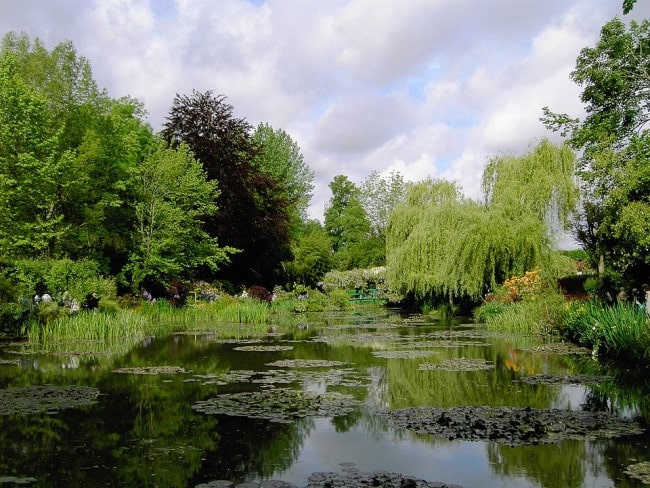
Monet’s gardens in Giverny. (C) Andrew Horne, Public Domain
In 1920 the gift became official. Paul Léon, director of the Musée des Beaux-Arts, signed an agreement for 12 panels to be installed according to Monet’s precise instructions. The contract was signed in April 1922, but Monet, ever dissatisfied and plagued with doubts, jettisoned still more paintings and kept the entire work with him in Giverny until his death in 1926.

Exterior of Musée de l’Orangerie in Paris. (C) Homonihilis, CC BY-SA 3.0
Clemenceau wasted no time after Monet’s death and sprang into action, determined that Monet’s wishes be adhered to, and inaugurated the rooms in the Musée de l’Orangerie to house eight of the great panels side by side, exactly the way Monet and the architect Camille Lefevre had envisaged them. Although all the same height (1.97 meters), the panels differed in length, but followed the curves of the two egg-shaped rooms perfectly. Daylight flooding the room from above makes the paintings resonate according to the weather, exactly as they were painted -all 100 linear meters of them.
Monet’s vision had always been that the paintings side by side would create “the illusion of an endless whole, of water without horizon or bank.” He began to focus on the surface of the water itself, with the trees and sky only reflections, and in doing so, broke with the old perceptions of Impressionism, where the viewer has a fixed view point. Here in Monet’s Water Lilies, the viewer is instead immersed directly into a specific moment of time, immersed directly, into his water gardens.
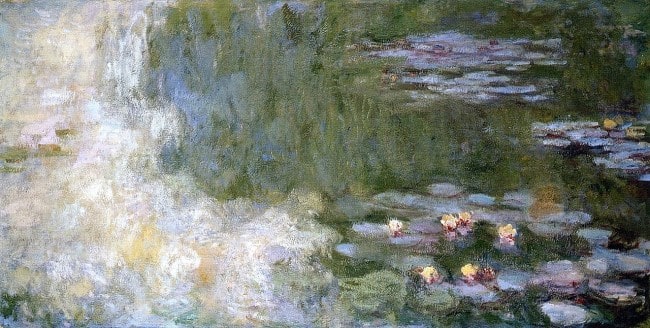
Claude Monet, The Water Lily Pond, W.1900. (C) Public Domain
Monet painted water lilies in all weathers, in every season, and at all times of the day, capturing the light at its strongest and the fading light at sunset. He built a studio for when the weather was simply too cold to paint outdoors, but when he embarked on his final opus, a bigger studio had to be built to contain the massive works of art. His work and use of color was inevitably affected by his cataracts, something his critics used against him when Water Lilies was first exhibited.
And it seemed in 1927 as if all Monet’s fears had been confirmed. Just a few short months after his death, with Water Lilies finally displayed in l’Orangerie, the critics panned them, and the public stayed away in droves. Impressionism and Monet were now old hat, discredited; Fauvism, Cubism, Dada and Surrealism had pushed the once revered artists into the long grass, and Monet, as he had feared for so long, was considered unimportant, a soon to be forgotten artist.
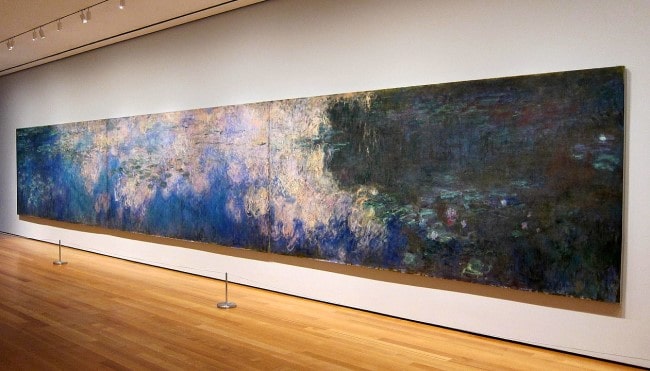
Reflections of Clouds on the Water-Lily Pond by Claude Monet. Public Domain
It took another astonishing 20 years and another World War before Monet was fully rediscovered by the outside world. In the years between, interest in Water Lilies was so minimal that the museum sometimes built walls in front of Monet’s work to display temporary exhibitions, obscuring Monet’s masterpieces completely.
It was the new modern art hall in New York in the 1950s that cast a more than interested glance in the direction of Monet, combined with André Masson’s article in 1952, comparing the Orangerie, as the Sistine Chapel of Impressionism, that had invoked a curiosity in private collectors and a demand to purchase paintings left in Monet’s studio. But it was only when MOMA in New York bought and displayed one of Monet’s great paintings in 1955 that interest in the artist and his work really took off. Americans visiting and living in Paris after the war saw Monet’s paintings with fresh eyes.
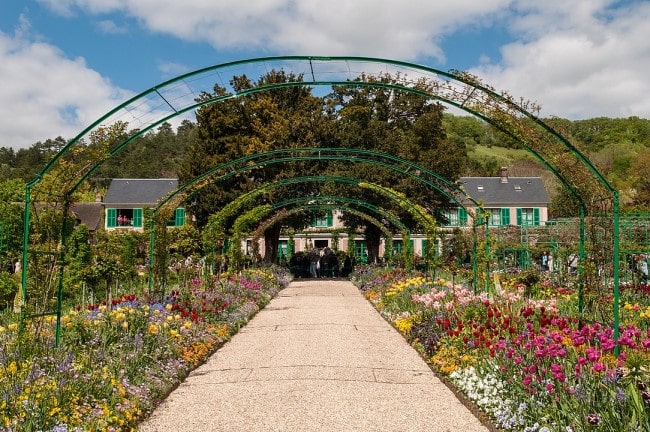
Claude Monet’s restored house and gardens. (C) Michal Osmenda, CC BY 2.0
The revival was never to die. The Musée de l’Orangerie, housing Monet’s Water Lilies, receives 800,000 visitors a year. More than half a million enthusiasts walk through Monet’s house, untouched since his death, stroll through his beloved gardens and water gardens, and stand on his red Japanese bridge surveying his water lilies exactly as Monet did 100 years ago.
But they could never paint them like Monet did.
DETAILS
Claude Monet House
84, Rue Claude Monet
27620 Giverny
Open 1st April – 1st November 9.30-5.30
Online reservation required. Admission 12 euros
Musée de l’Orangerie
Tuileries Garden
Place de la Concorde
Closed Tuesdays. Open 9am – 5.15pm
Admission 12.50 euros. Free first Sunday of the month.
Lead photo credit : Claude Monet - Water Lilies and Japanese Bridge. Public Domain
More in Art, exhibition, gardens, Giverny, Impressionist art, Monet, painting

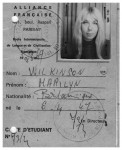




REPLY
REPLY